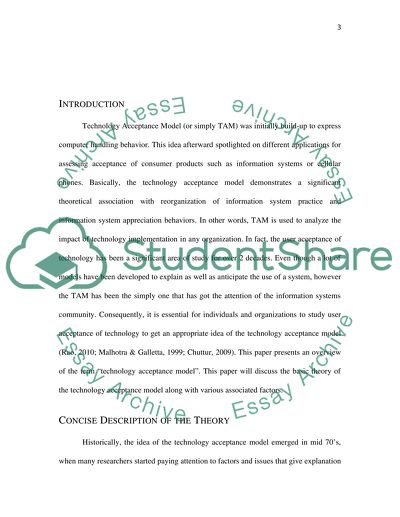Cite this document
(“Technology acceptance model (TAM) Article Example | Topics and Well Written Essays - 4000 words”, n.d.)
Retrieved from https://studentshare.org/information-technology/1396519-technology-acceptance-model-tam
Retrieved from https://studentshare.org/information-technology/1396519-technology-acceptance-model-tam
(Technology Acceptance Model (TAM) Article Example | Topics and Well Written Essays - 4000 Words)
https://studentshare.org/information-technology/1396519-technology-acceptance-model-tam.
https://studentshare.org/information-technology/1396519-technology-acceptance-model-tam.
“Technology Acceptance Model (TAM) Article Example | Topics and Well Written Essays - 4000 Words”, n.d. https://studentshare.org/information-technology/1396519-technology-acceptance-model-tam.


